How to do break dance moves
How to breakdance step by step
The following 3 videos will teach you how to breakdance step by step. We recommend that you watch these lessons in order as they are arranged from easiest to hardest. These moves come directly from our breakdancing courses which you should check out if you want to learn more. A word of caution, you must be careful when you attempt these moves. Be sure to study the movements very carefully and slowly and then ease into them. For other online dance classes click here.
Free mini video course for break dance:
Beginner break dance moves
Breakdancing move #1: 3 Step
The 3 step is one of the most popular beginner break dance moves. It consist of 3 steps that are done in a circle. In this move you will start with one leg extended in front of you and then will switch the legs as fast as you can so that the other leg is extended, from there you bring the leg side where you end up in a kind of push up position. Learn how to sync the arm switches with your leg switches.
Want More?
The Complete Breakdancing Course For beginners (No experience needed)
Learn simple but impressive moves step by step! You will learn footwork moves, ground moves as well as freezes. This video course has 3 modules with +3 hours of video instruction. Delivered through instant online access.
Learn more & Buy it here (Click here)
Breakdance move #2: Corkscrew Up:
This is another cool bboy move. The corkscrew up is perfect for when you need to get up from the ground in a “cool” and smooth way. You can do this move on it’s own or from any other combination of moves.Here you will develop strength and balance as you push off the floor to spin upwards and around.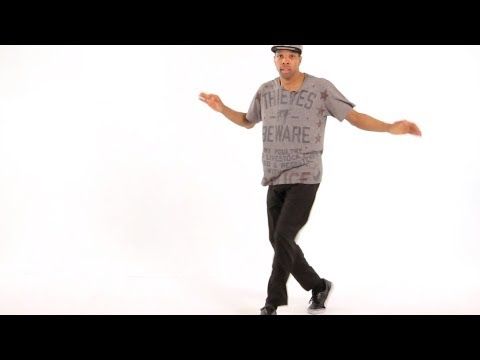
One more to go below!
Want More?
The Complete Breakdancing Course For beginners (No experience needed)
Learn simple but impressive moves step by step! You will learn footwork moves, ground moves as well as freezes. This video course has 3 modules with +3 hours of video instruction. Delivered through instant online access.
Learn more & Buy it here (Click here)
Break dance move #3: The baby freeze
Learn how to do a baby freeze move in this video. Freezes in Breakdancing are meant to draw attention to the dancer and are usually put in at the end of some footwork combination like the 3-step above! The baby freeze is great to start out with since its small. It still requires lots of coordination and practice so take it slowly and make sure you don’t skip anything.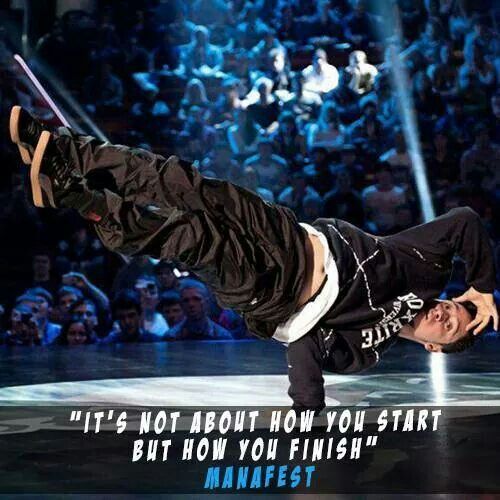
Get Barry’s full course now:
The Complete Breakdancing Course For beginners (No experience needed)
Learn simple but impressive moves step by step! You will learn footwork moves, ground moves as well as freezes. This video course has 3 modules with +3 hours of video instruction. Delivered through instant online access.
Learn more & Buy it here (Click here)
History of Breakdancing:
Breakdancing was founded by the black community and Puerto Rican kids in the 1970s. And it really became popular after James brown’s single “Get On The Good Foot” where his busted out his high energy footwork dancing. After that, the kids in New york started to copy his moves and eventually it evolved to be called b-boy or break dancing.![]() At that time most of the style was ground footwork combinations without any of the fancy stuff you see today like windmills or back spins that are popular today. There were also breakdancing battles between gangs or clicks.
At that time most of the style was ground footwork combinations without any of the fancy stuff you see today like windmills or back spins that are popular today. There were also breakdancing battles between gangs or clicks.
Another dance called “uprock” influenced the b-boy dancers. In this dance style, the dancers mimic fighting moves into rhythmic dance moves that opponents would use to ‘battle’ against one another.
The music is not restricted to Hip Hop anymore. These days dancers choose Techno, Jazz, electronic, pop and an other types of music that suites their style.
Other styles:
Back to free Hip Hop dance videos page
How to Ballroom dance
How to dance at clubs and parties
Online dance classes
Breakdance Moves List - Dance Poise
Breakdance is one of the most popular and eye-catching dance forms today. Here are some of the beginners breakdance moves to get you started.
Call it hip-hop dancing, B-boying or simply breaking, breakdancing is one of the most popular forms of dancing, among the youth, all over the world.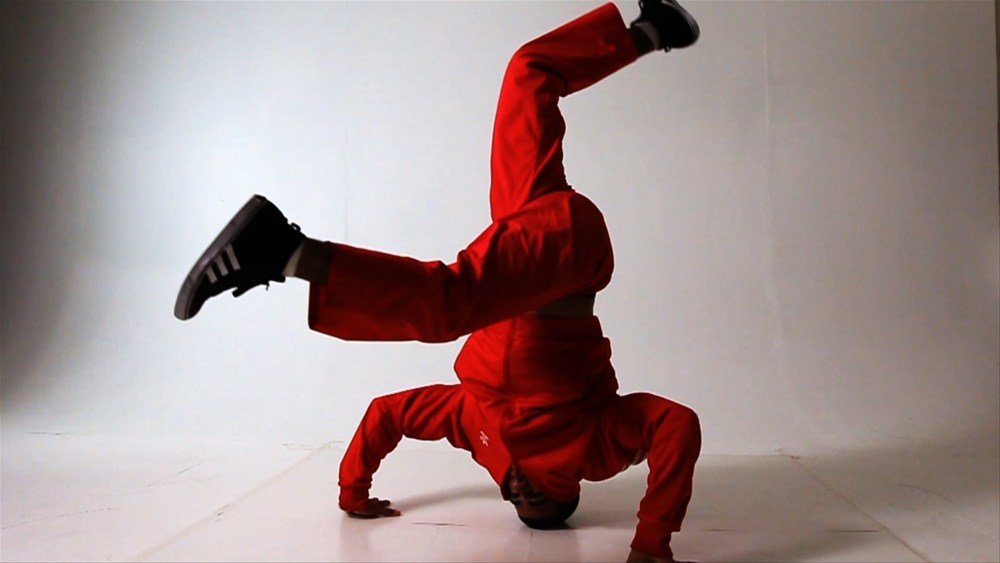 It started off as an important part of the hip hop culture, along with beatboxing, rapping and DJing. The hip hop revolution is said to have started in the South Bronx, NYC. It is a free-style dance form, which requires a lot of athleticism, energy and creativity. Its experimental nature makes it difficult to make different break dance moves list, but the moves for beginners are given below in this article.
It started off as an important part of the hip hop culture, along with beatboxing, rapping and DJing. The hip hop revolution is said to have started in the South Bronx, NYC. It is a free-style dance form, which requires a lot of athleticism, energy and creativity. Its experimental nature makes it difficult to make different break dance moves list, but the moves for beginners are given below in this article.
While these moves will get you started, novelty is well accepted in breakdance, so if you want to make it big in this field, you’re going to have to come up with stuff of your own.
Best Breakdance Moves Names
There are 7 basic types of moves in breakdancing: the Toprock, the Footwork, the Drops, the Floor Rock, the Power Moves, the Freezes and the Suicides. Let us look at the meaning of these types and the different moves which fall under each category.
The Toprock
The Toprock is a set of moves which are performed in a standing position. Toprock moves are generally easier and are used by the b-boys as a warm up before the real stuff starts. The easy moves in toprock are-
Toprock moves are generally easier and are used by the b-boys as a warm up before the real stuff starts. The easy moves in toprock are-
➟ Basic Toprock
➟ Side-Step
➟ Boyoing
➟ Power Step
➟ Power Step Hop
➟ Latin Rock
The Footwork
Foot work is comprises a set of moves that the dancer performs with his feet while he is standing or on the floor. Given below are some popular moves-
➟ 2 step
➟ 3 step
➟ 4 step
➟ 5 step
➟ 6 step
➟ 7 step
➟ 8 step
➟ 10 step
➟ 12 step
➟ Zulu Spins
➟ Kick-outs
➟ Spindle
➟ Swapping
➟ Shuffles
➟ Coffee Grinder
The Drops
The drops are where the dancer ‘drops’ from the standing position, down to the floor to perform the next set of moves. A dancer may ‘drop’ in the following ways-
➟ Coin Drop
➟ Knee Drop
➟ Other Knee Drop
➟ Sweep Drop
➟ Thread Drop
➟ Corkscrew
Floor Rocks
Floor rocks are transition moves that involve intricate and stylish footwork. The basic list of floor rocks has-
The basic list of floor rocks has-
➟ Scissors
➟ Belly Swim
➟ Body Glide
➟ Side Slide
➟ Figure 4
The Power Moves
The power moves are where the b-boy goes into a spinning motion. They are usually the toughest moves, and the judges rate the dancer on the perfection with which he makes these moves.
➟ Flare
➟ Swipe
➟ Windmill
➟ Back Spin
➟ Side Spin
➟ Halos
➟ Head Spin
➟ Head Slides
Freeze
Freeze is a technique in which the dancer momentarily pauses in a balance challenging or intriguing position. There are innumerable variations of this technique and of course, you can always come up with your own body contorting move and just hold for a couple of seconds. Some common freeze moves are-
➟ Baby Freeze
➟ Air Chair
➟ Side Chair
➟ Elbow Freeze
➟ Dead Freeze
➟ Shoulder Freeze
➟ G-Kick
➟ Head Stand
➟ Hollowback
➟ Pike
➟ Flag
Suicide
Alternatively, a dancer may choose to end the dance routine by pretending to fall down and loose control of himself. To make a ‘suicide’ look effective, it must look painful, as if while performing you have really hit yourself. But yes, in trying to make it look kosher don’t just end up hurting yourself for real!
To make a ‘suicide’ look effective, it must look painful, as if while performing you have really hit yourself. But yes, in trying to make it look kosher don’t just end up hurting yourself for real!
➟ Front Headflip
➟ Back Headflip
➟ Hard Drive
➟ Pencil Spin
➟ Suicide Rubberband
➟ Suicide Corkscrew
➟ Coin Drop
Other moves in the list include the Turtle, the Float, the two-handed elbow hop, the one-handed elbow hop, etc.
So this was a good long list of breakdance moves for beginners. To execute most of the moves in this list, you will need good physical strength and lots of practice. Happy breaking!
Like it? Share it!
Uncategorized
Get Updates Right to Your Inbox
Sign up to receive the latest and greatest articles from our site automatically each week (give or take)...right to your inbox.
Blog UpdatesEmail Address *
Break dance moves | Power-Move.Ru
Conditionally break movements can be divided into 2 types:
- Upper break dance moves
- Lower Break Dance Movements
Let's take a closer look at the movements of the top break :
Strobing - this is the movement of break is an imitation of movements in the light of a strobe light. It consists of many small phases, stops, with sharp transitions between them. The important thing is that for easy and correct execution of the style, the muscles must be relaxed. It is necessary to work out the gesture first smoothly and relaxing, then also smoothly, but with full muscle tension.
It consists of many small phases, stops, with sharp transitions between them. The important thing is that for easy and correct execution of the style, the muscles must be relaxed. It is necessary to work out the gesture first smoothly and relaxing, then also smoothly, but with full muscle tension.
Dimestop is a break dance movement is a Dimestop style and way of stopping, fixing. The name comes from the American "dime" - a coin of ten cents, and "stop" - stop. This is explained by the fact that when a person studied this direction, he scattered coins around him. Stepping on a coin while moving, the dancer froze for a moment. Thus, dimestop is a quick stop of the whole body or part of it, but without any impulse or push.
Floating (Gliding) is a break movement is a sliding, a separate style from other funk styles, and a separate movement. In total, there are more than 40 of its variations. The most popular are glide - sliding to the left, right or along a geometric figure (circle, square), moonwalk This, of course, not counting all kinds of knee glides - sliding on your knees. Here it is necessary to make a digression and draw a clear line between gliding and floating. All of the above are glides. Floats should be understood as nothing more than elementary heel-toe walking.
Here it is necessary to make a digression and draw a clear line between gliding and floating. All of the above are glides. Floats should be understood as nothing more than elementary heel-toe walking.
Waving is break dance movement is waves. It is the waves, combined with fixation, that in our country are called “electric boogie”. Although, of course, this is not “boogie”, but wavering is one of the funk styles. Its main idea is an imitation of the fact that a wave or a bunch of energy moves through the dancer's body. Rather, it is a visual effect, not an idea. There are a huge number of sub-styles in waving.
3D - Information on this style is very scarce. We can only say that 3D is a combination of wave and strobing, when the wave traveling through the body is broken into more points.
Bopping is the break move is the secret style of Boppin' Dre (Andre), and the LA Bopping crew.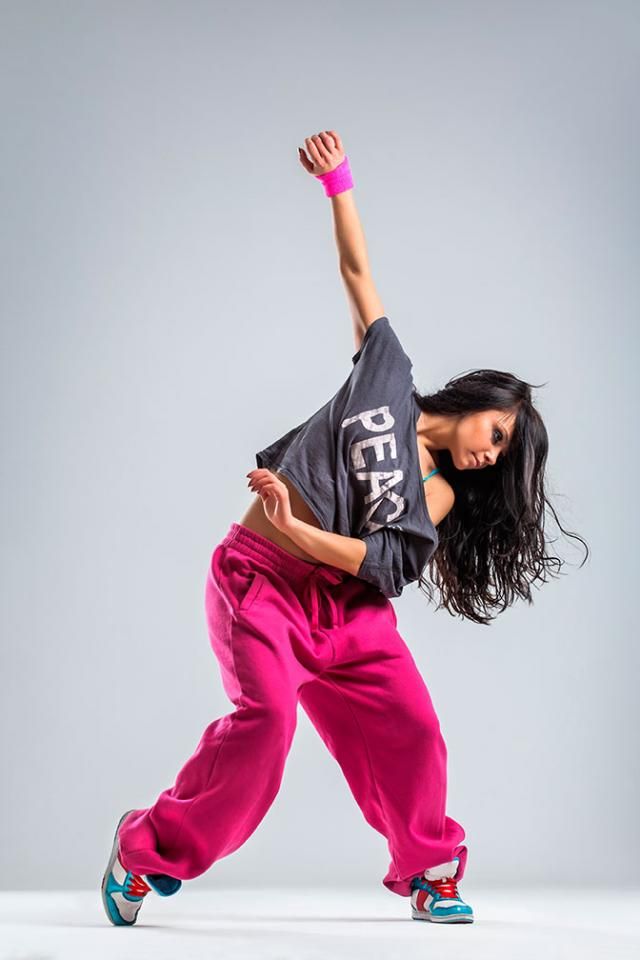 The disciples of Boppin Dre founded a team that practices predominantly in this direction. The shortest definition is that bopping is a dancing robot.
The disciples of Boppin Dre founded a team that practices predominantly in this direction. The shortest definition is that bopping is a dancing robot.
King tut (tutting) is a breakdance movement is a primitive slang king tut - short for "King Tutankhamun", originally an imitation of ancient Egyptian drawings depicting people in various poses. It was characteristic that in all movements right angles were observed between the body and arms, shoulder and forearm, forearm and wrist. The palms are even (or “boat”), fingers together, legs either together or at certain angles to the body.
Spiderman is break movement is a very interesting style that has not yet been mastered in our country. What is it, all these "digits" and "spidermen"? Once upon a time, Poppin' Pete, the brother of Boogaloo Sam, the founder of The Electric Boogaloos team, created the spiderman style, the essence of which was the work of the fingers. Subsequently, a wave of rave culture swept America, then two styles of dance appeared that had nothing to do with funk - one was called "liquid" and the other "digits". Digits is a dance exclusively with fingers. That is, the palms and fingers perform certain sequences of movements to the music. Qualitatively performed, this dance is simply mesmerizing. Unfortunately, today, you can see it only by searching the Internet for video clips. At one time, there were entire sections dedicated to video liquid and digits. However, they are not so easy to find now. Finger waving speaks for itself - finger waves, in various sequences and combinations. The viewer's attention always involuntarily captures not the dancer as a whole, but only separate parts of his body. The hands and feet play a very important role here.
Subsequently, a wave of rave culture swept America, then two styles of dance appeared that had nothing to do with funk - one was called "liquid" and the other "digits". Digits is a dance exclusively with fingers. That is, the palms and fingers perform certain sequences of movements to the music. Qualitatively performed, this dance is simply mesmerizing. Unfortunately, today, you can see it only by searching the Internet for video clips. At one time, there were entire sections dedicated to video liquid and digits. However, they are not so easy to find now. Finger waving speaks for itself - finger waves, in various sequences and combinations. The viewer's attention always involuntarily captures not the dancer as a whole, but only separate parts of his body. The hands and feet play a very important role here.
Robot (botting) is break dance movement is a style that at one time made a name for break dance in the Soviet Union (however, this is debatable).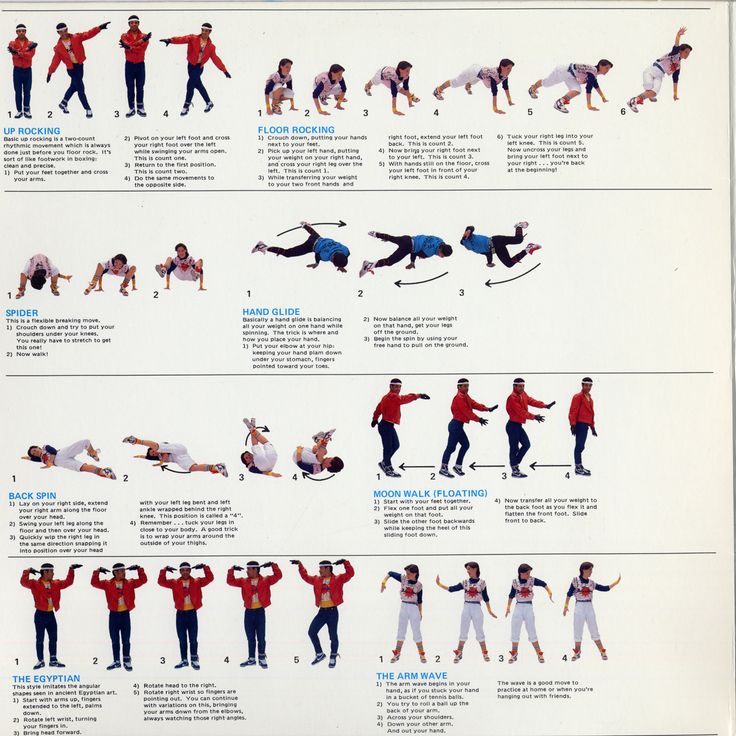 One of the founders of botting (robotting) is the American mime Robert Shields. In the seventies, there was a show on television where two talented artists demonstrated the art of pantomime in various subjects. The show was called Shields & Yarnell (Yarnell - that was the name of Shields' partner). Perhaps this TV show is not the only one that served as an impetus for the creation of a dance direction, but, in any case, it had a huge impact on dancing youth. Perhaps that is why Robert Shields is considered almost a living legend and enjoys great respect among people who know the history of funk styles. He himself, being already an elderly man, is the owner of a design company, but sometimes he chooses the time to show up at major events, like the Freestyle Session and Bboy Summit. "Robot" Shields is a classic, and he uses just the dimestop technique, although this is not necessary in modern times. The secret of botting as a style lies in two things. In technology, this is, of course, isolation.
One of the founders of botting (robotting) is the American mime Robert Shields. In the seventies, there was a show on television where two talented artists demonstrated the art of pantomime in various subjects. The show was called Shields & Yarnell (Yarnell - that was the name of Shields' partner). Perhaps this TV show is not the only one that served as an impetus for the creation of a dance direction, but, in any case, it had a huge impact on dancing youth. Perhaps that is why Robert Shields is considered almost a living legend and enjoys great respect among people who know the history of funk styles. He himself, being already an elderly man, is the owner of a design company, but sometimes he chooses the time to show up at major events, like the Freestyle Session and Bboy Summit. "Robot" Shields is a classic, and he uses just the dimestop technique, although this is not necessary in modern times. The secret of botting as a style lies in two things. In technology, this is, of course, isolation. All movements should be as isolated from each other as possible. "Isolation" is a term of pantomime, and you can read more about it in the relevant sources. The second secret lies in attitude. There are some other important details. The viewer's attention is fixed not on the body as a whole, but on such things as hands, fingers and, of course, the face (in particular, the eyes). Therefore, the above parts of the body and facial expressions must be given special attention.
All movements should be as isolated from each other as possible. "Isolation" is a term of pantomime, and you can read more about it in the relevant sources. The second secret lies in attitude. There are some other important details. The viewer's attention is fixed not on the body as a whole, but on such things as hands, fingers and, of course, the face (in particular, the eyes). Therefore, the above parts of the body and facial expressions must be given special attention.
Hitting (Ticking) - this break movement represents a fixation both of these terms have a double meaning. On the one hand, they imply what is called "fixation", that is, a sharp contraction of the muscles and, as a result, a strong, or not very noticeable push. On the other hand, “ticking” can also be called your own direction in dance. The dancer uses sharp muscle contractions not at the beginning or end of the movement, but during it. In other words, “ticking” is like strobing, only smooth and with fixation.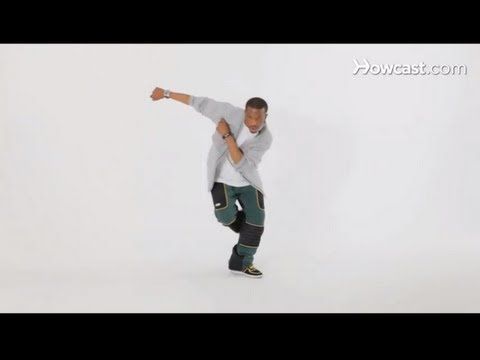
Strutting is break dance movement is Strutting - as a style, it implies characteristic movements, that is, movements with the legs. The essence of the movements is that the full step is divided into several small steps. For example, the dancer is standing, the right leg is in front, the left is behind, the body is in the middle. In a normal walk, the weight of the body is transferred to the right foot and the left step is full length, so that it is in front and the right is behind. The simplest stratting will imply that you first need to put your left foot to the right, and only then step forward. Thus, your step is divided into two parts. You can, of course, divide it into smaller segments. You can add ticking here (fixing the body) or dimestop for every small step.
Saccin' (Sacramento style) is a break movement is a style that originated somewhere in Sacramento. Sekkin implies characteristic movements of the legs, along with fixation.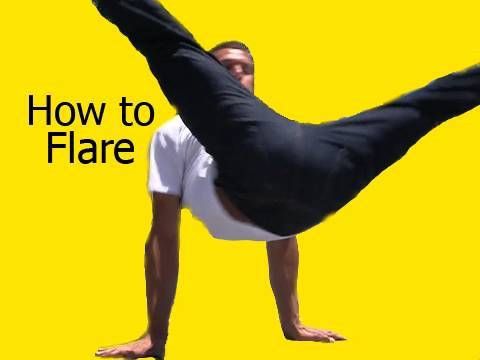 Pose "A": right leg behind, left leg in front, body in the middle, body weight on two legs. Pose "B": everything is the same, only the legs have changed places - right in front, left in back, the body remains in the same place. During the step, the leg that is in front moves first. She stands back, and then the other leg steps forward. The body remains in place, that is, the steps are performed without direct movement.
Pose "A": right leg behind, left leg in front, body in the middle, body weight on two legs. Pose "B": everything is the same, only the legs have changed places - right in front, left in back, the body remains in the same place. During the step, the leg that is in front moves first. She stands back, and then the other leg steps forward. The body remains in place, that is, the steps are performed without direct movement.
Filmore is break dance movement is Filmore as the direction also takes its name from Filmore street. There is practically no exact description of this style anywhere. Fillmore, performed in the process of popping, involves movements of the hands, observing clear angles. Fillmore has nothing to do with Egypt. The arms are either straight or bent at a right angle. An analogy was given to soldiers marching with rifles in a parade.
Popping is break movement is a separate dance style, and at the same time the so-called umbrella term, that is, a general term for all funk styles. Although it is still incorrect to use it as a general term. Popping, as one of the funk styles, involves the rhythmic contraction of all the major muscle groups of the body to the music, creating a wince effect. Free movement on the dance floor, the body takes various poses and positions in space. The process of popping comes down to changing various positions to the rhythm along with pop fixation. The main music for popping is funk. Popping has a set of basic moves, such as "fresno", etc. By itself, in its purest form, it is not at all like what is used to be understood as "top breakdancing" in the former Soviet Union. However, popping is the most common funk style. Its creator is Sam Solomon (Sam Solomon, founder of The Electric Boogaloos).
Although it is still incorrect to use it as a general term. Popping, as one of the funk styles, involves the rhythmic contraction of all the major muscle groups of the body to the music, creating a wince effect. Free movement on the dance floor, the body takes various poses and positions in space. The process of popping comes down to changing various positions to the rhythm along with pop fixation. The main music for popping is funk. Popping has a set of basic moves, such as "fresno", etc. By itself, in its purest form, it is not at all like what is used to be understood as "top breakdancing" in the former Soviet Union. However, popping is the most common funk style. Its creator is Sam Solomon (Sam Solomon, founder of The Electric Boogaloos).
Boog (boogaloo) is breakdance movement is extremely difficult to describe, but this style is very interesting. In Russia, this style in battles was combined into electrickboogie, popping. His father is also Sam Solomon (Boogaloo Sam). Boogaloo is a very fluid style, characterized by the fact that the body assumes unnatural poses, making smooth transitions between them. One of the basic movements are the so-called boogaloo rolls, literally “rolls”. Rolls mean the rotation of various parts of the body - legs (leg rolls), hips (hip rolls), chest (chest rolls), etc. Snaking - A style that includes several sub-styles. Snaking was created during the dawn of funk culture by members of the Mysterious Poppers. The dancers in this group each had their own version of snaking in their arsenal. The most common of them, and, perhaps, the hallmark of the whole style, was the "cobra". This is a complex, multicomponent wave. The meaning of the cobra is in the simultaneous rotation of the head, shoulders (in different directions, one clockwise, the other against), rotation of the chest (in the direction opposite to the head), hips, as well as certain leg work (when the right shoulder is below during rotation, it bends the right leg, thus, the knee is brought forward, and when the left shoulder is below, vice versa).
Boogaloo is a very fluid style, characterized by the fact that the body assumes unnatural poses, making smooth transitions between them. One of the basic movements are the so-called boogaloo rolls, literally “rolls”. Rolls mean the rotation of various parts of the body - legs (leg rolls), hips (hip rolls), chest (chest rolls), etc. Snaking - A style that includes several sub-styles. Snaking was created during the dawn of funk culture by members of the Mysterious Poppers. The dancers in this group each had their own version of snaking in their arsenal. The most common of them, and, perhaps, the hallmark of the whole style, was the "cobra". This is a complex, multicomponent wave. The meaning of the cobra is in the simultaneous rotation of the head, shoulders (in different directions, one clockwise, the other against), rotation of the chest (in the direction opposite to the head), hips, as well as certain leg work (when the right shoulder is below during rotation, it bends the right leg, thus, the knee is brought forward, and when the left shoulder is below, vice versa).
Slowmo is break motion is (short for slow motion) is an imitation of slow motion video or film playback. Slowmo looks very impressive, subject to high-quality performance. For example, at some point in the dance, you can sharply slow down to the rhythm of the music and repeat the movements already performed, but only slowly, and then accelerate sharply, or vice versa, slow down slowly and stop completely.
Consider the movements of the lower break dance :
Flare (Delasal) - in Russian: fly - rotation of the legs in a circle, spreading the corner, alternately changing hands. By the way, this break dance movement came from gymnastics.
Windmill - in Russian: helik (from Helicopter ) - Rotation on the floor with legs wide apart. Rotation occurs due to the swing movements of the legs. The transition across the back should be through the area of the shoulder blades to reduce the chance of injury to the spine. After the transition from the shoulder blades, the head rests on the floor, the hand rests on the press to be able to make the next run. There are varieties of this element, one of which is to set the position of the hands behind the back and, as a result, after the transition from the back, the hands are not involved. Gelik base break movement .
After the transition from the shoulder blades, the head rests on the floor, the hand rests on the press to be able to make the next run. There are varieties of this element, one of which is to set the position of the hands behind the back and, as a result, after the transition from the back, the hands are not involved. Gelik base break movement .
Munchmill - in Russian: barrel - similar to helik, but turning over is done by jumping with a push with legs that are crossed and pressed to the chest. This breakdance movement resembles a spring.
Headspin - rotation on the head - rotation is done with the help of hands. The position of the legs may be different. The most common is with the legs spread apart and bent into an obtuse (or right) angle. It is often performed in combination with a “helik” and ends with some element (most often in the form of one straightened leg and the second, placed across the knee, like an inverted “4”). The head spin is one of the most spectacular break movements .
The head spin is one of the most spectacular break movements .
1999 (ninety nine) - in Russian: candle - this is break dance movement is a rotation on a straight arm, there are many options for the location of the legs and the second hand.
2000 (two thousand) - also called a candle, but this is a spin on two hands. There are also many leg options.
Swipe - this break movement is a rotation of the body 180 degrees around the horizontal axis, pushing off the floor with one or two legs and changing the supporting hand. The key features of this element are the strong extension of the leg or legs while twisting the body. There are varieties of this element, one of which is to place the elbows on the floor, not the hands.
Turtle - in the Russian version: turtle - Horizontal rotation of the body on bent arms, which rest with the elbows on the press.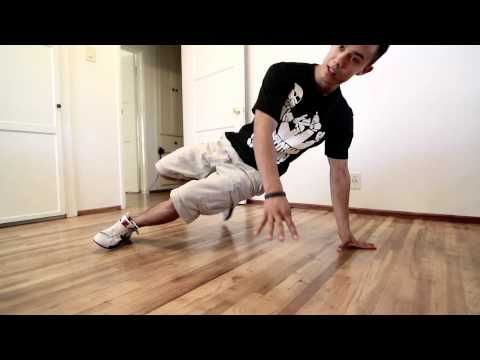 Rotation consists in dragging the body from one elbow, which rests against a certain part of the press (right or left), to another supporting elbow while simultaneously directing the body in the direction of movement.
Rotation consists in dragging the body from one elbow, which rests against a certain part of the press (right or left), to another supporting elbow while simultaneously directing the body in the direction of movement.
Air Flare is one of the most difficult breakdance moves of . With the movement of the arms, it is very similar to the Swipe element, but the main feature is that the legs do not come into contact with the floor, they constantly make swing movements in a circle in the air, thereby allowing the body to be kept in a position close to horizontal. There are varieties of this element, one of which is to put the elbows on the floor, and not straight arms.
Cricket - This break movement is very similar to the Turtle element. In this element, instead of transferring the center of gravity of the body from one elbow to another, only one hand is used, while the second is a guide. The first hand makes a push, and due to this, the body bounces. At this moment, the first hand turns around and is placed on the floor, after which the second hand, resting on the floor, scrolls the body. There are variations of this element, one of which is to use only one hand to push and to twist the body.
At this moment, the first hand turns around and is placed on the floor, after which the second hand, resting on the floor, scrolls the body. There are variations of this element, one of which is to use only one hand to push and to twist the body.
Sixsteps is breakdance movement translated into Russian as Six Steps . It is called so because it consists of six leg movements. The hands in this element are the support. There is a movement of the legs in a different position, in addition, when rearranging the legs, they must be crossed twice. The result will be circular runs with your feet on the floor.
Backspin - The break movement is a 360 degree or more backspin with legs wide apart or crossed. Similar to Windmill scrolling on the shoulder blades.
Flare - (in Russian “fly”) the element is similar to the gymnastic element “dalasalom”, that is, rotation on a horse, only in this case on the floor and with legs apart.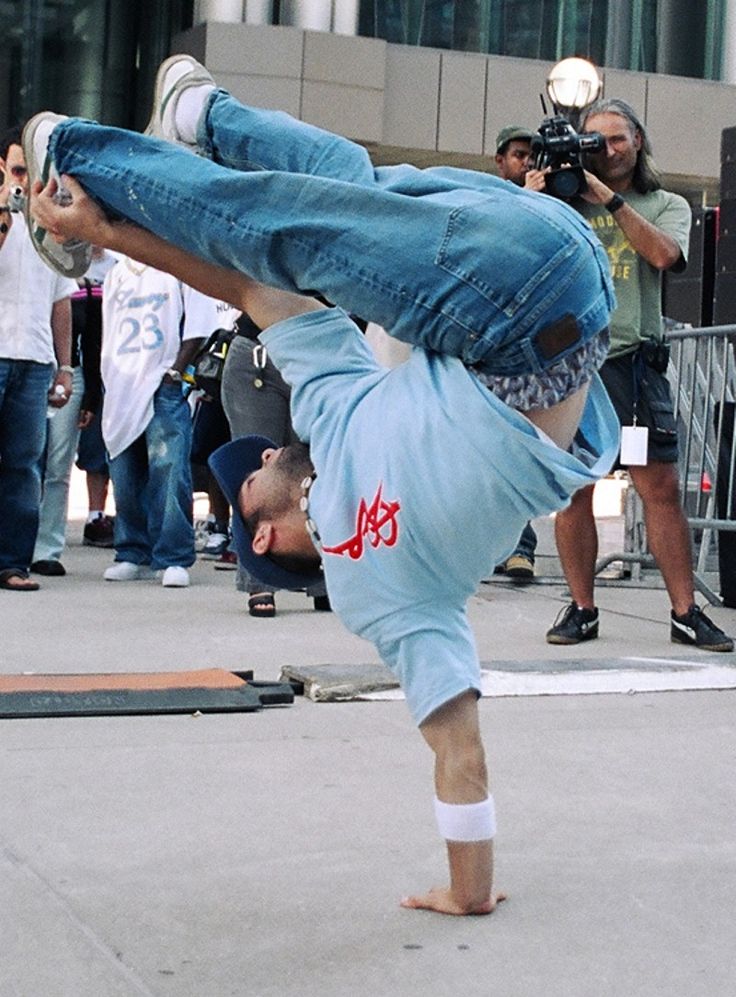
Baby freeze - the simplest break dance stand , is a frieze similar to Turtle, but without rotation. Unlike Turtle, the head is lowered and one knee rests on the elbow, varieties: open baby freeze, close baby freeze, baby gun.
Air baby freeze - standing on the arm slightly bent at the elbow with the knee placed on the elbow.
Air Chair - frieze, the elbow rests with the triceps on the hip, legs together and on itself, the body turns as much as possible towards the floor so that it seems as if the biboy is standing with his back to the ground.
Drill - One of the types of break dance movement headspin , legs straight up crossed among themselves, arms pressed to the shoulders, or apart, but not touching the floor. B-boy spins fast, standing on just one head.
Halo - An element similar to Baby freeze, but at the same time break movement b-boy scrolls his head to the side then stands on Baby freeze and again "jackhammer" - an element similar to Cricket, but jumps are made on one hand.
Break dance is not limited to these moves, any b-boy can come up with their own moves and counters.
Break dance training. VIEW ALL LESSONS >>>
Breaking or break dance (break dance) - one of the most spectacular areas of street dance, which includes torsion, energetic "runs" and sudden stops of the dancer (freez) during his exit. The dance style began to form in the early 70s in New York in the Bronx area. Only a few years have passed and from the underground dance breakdance has received worldwide fame and recognition. Today, breaking is one of the strongest dance subcultures, with a developed technique, system of events and a real street spirit. On this page you will see break dance lessons for beginners.
If you want to learn how to breakdance and feel that you can't do without a mentor, come to the Dragon Dance School for a trial breakdance lesson. Since 2000, we have been helping people learn how to move beautifully and feel the music. Already several thousand people have been trained and learned to dance. Even if you have never worked out before, even if you are not in good physical shape now, all this is easily fixable. You will understand that learning to dance is easy. Come for a free trial lesson.
Since 2000, we have been helping people learn how to move beautifully and feel the music. Already several thousand people have been trained and learned to dance. Even if you have never worked out before, even if you are not in good physical shape now, all this is easily fixable. You will understand that learning to dance is easy. Come for a free trial lesson.
Break dance training for beginners: the right warm-up
Any dance lesson in any style, be it breaking or hip-hop dance, should begin with a warm-up. This allows you to warm up the body, muscles and ligaments. This is especially important for learning the lower break, since it uses the maximum resources of the body, which means that in order to swing to the fullest, you need to warm up a lot, maybe even sweat a little.
Break dance video lessons: top rock (top rock)
Top rock is what the dancer does before entering the lower elements. However, top rock should not be neglected, for a good dancer is easily recognized by the first moves of top rock. It's like a business card. Look online lessons on top rock and learn the elements suggested there. This will allow you to learn how to breakdance even at home.
1. Break dance school: Top rock 1
2. Break dance lessons: Top Rock 2
3. Top Rock 3. Movement Break Dansa for beginners
4. TOP ROCK 4. Street dance lessons
Our school BREAK DANSA children and not only in Moscow. Sign up and come to a trial lesson
Basic technique: footwork (style)
Footwork or style is one of the main sub-styles in breakdance. It includes, as the name suggests, "footwork". And indeed it is. A variety of "running", "cutting" and so on. Each bboy tries to stand out in footwork and do it in his own way. Therefore, it is important to learn the basics at the beginning, and then proceed to improvise and develop your own manner in footwork.
1. How to learn how to dance Break DANS: Sharchka
2. BREK DANS LUCK: Six STPS
3. Online lessons BREAK DANSA: Three STEPS 4. dance for beginners: CC's
Basic technique: Freez/Power trix
If you watched breakdance videos from battles, then you probably remember that during the dance, the b-boy can suddenly stop or freeze in the most incredible position. These stops are called "friezes". Also in breakdance, many elements are performed from a handstand, elbows, etc. This power substyle is called "trix". Watch break dance lessons and master the base of these directions.
1. Break dance. Where to start: Balance
2. Freez 1. How to learn Break Dance Fris
3. Video Dance Lesson Break Dance: Freez 2
4. Freez 3. Break dance lessons
Basic technique: Power move
Finally, we move on to the most spectacular part of break dance for many - power moves. These are power movements, all kinds of torsion on the head, back, various "air twists" and "air tracks". Indeed, power moves are the hallmark of breaking. In order to learn how to bray dance and perform complex elements, you will first need patience. Every break dance move requires thoughtful practice. Therefore, if something did not work out on the first try, do not be discouraged. Just do it again. Record your video. Compare with how it was explained in the video tutorial. A little work and everything will work out! You will learn to dance breakdance the way you have long wanted to!
1. Basic rotation for beginners Backspin (Bek Spin)
